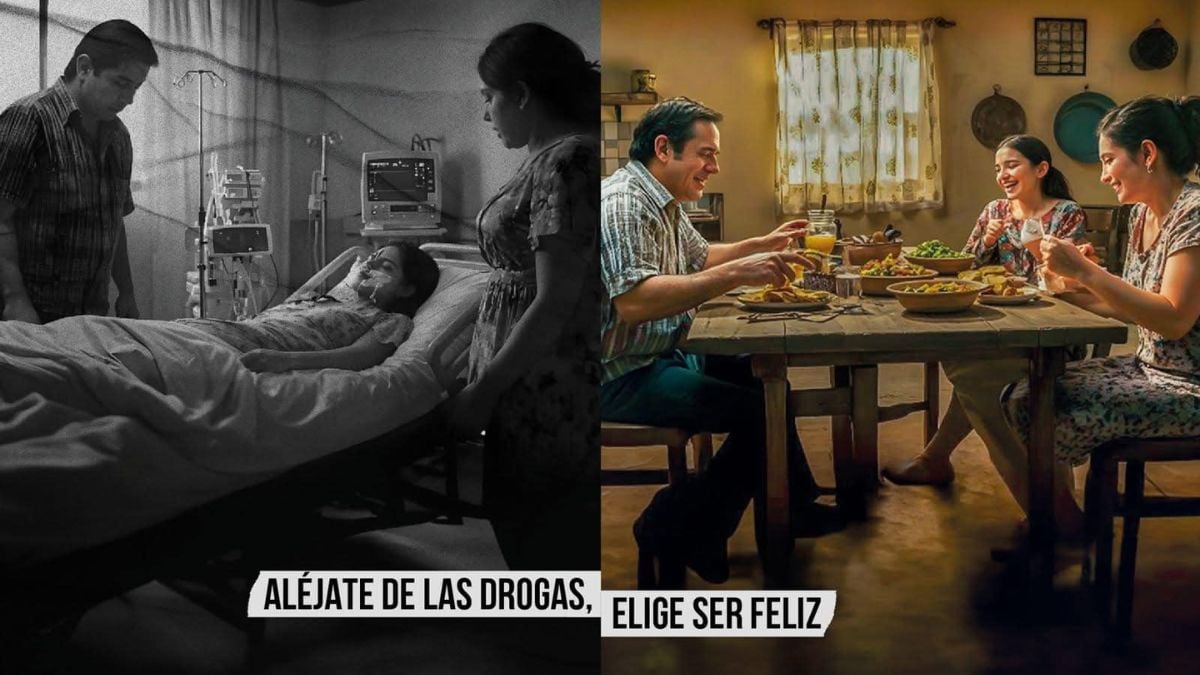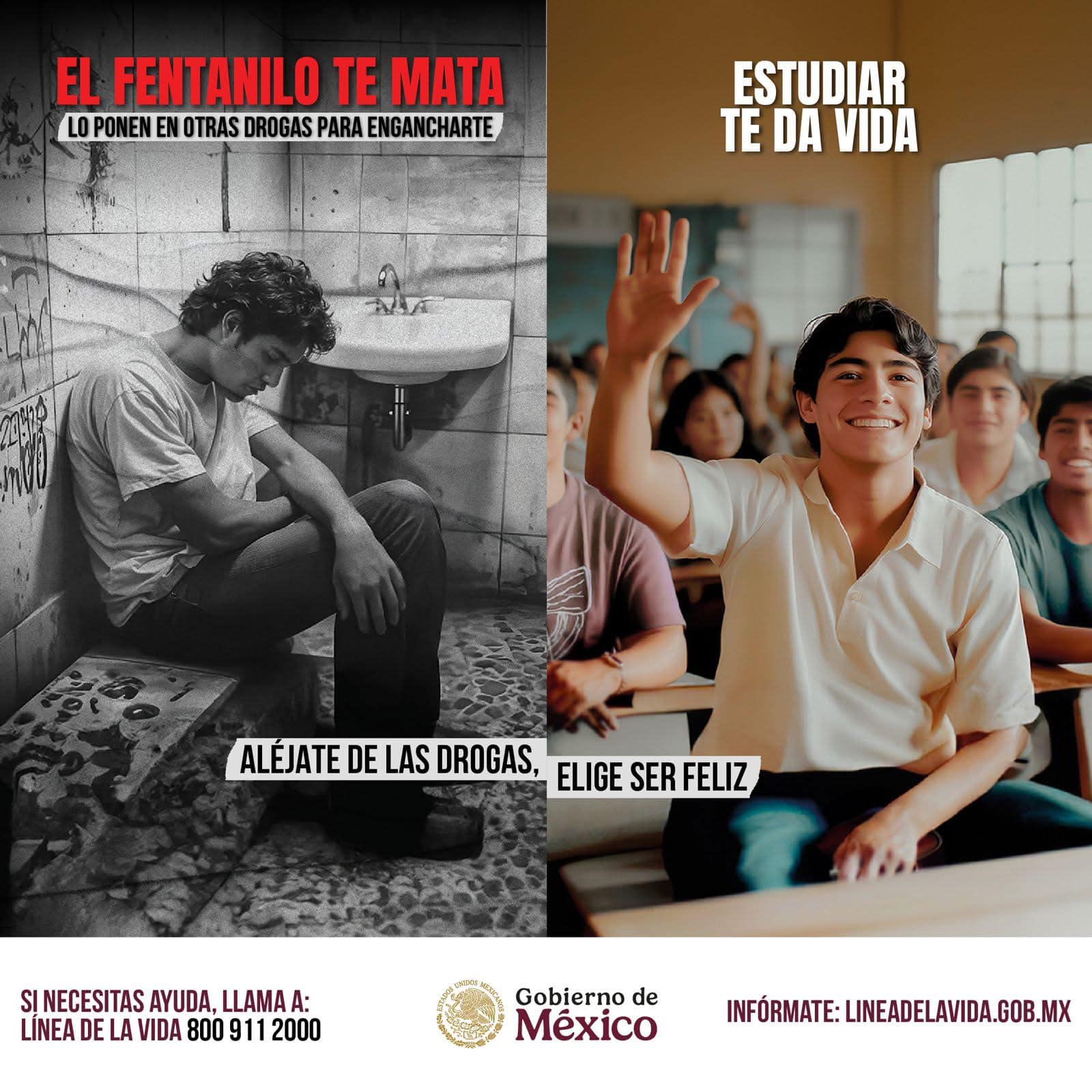
In the last three years, the Government of Mexico has allocated more than 42 million pesos to prevention and awareness strategies regarding fentanyl consumption. This information was published by the newspaper El Universal. Additionally, the private sector has committed 300 million pesos to this campaign, bringing the total to more than 16.5 million dollars.
The campaign “Stay Away from Drugs. Fentanyl Kills You” has been the cornerstone of these efforts, utilizing print, digital, and audiovisual media to warn the public about the dangers of this substance.
The budget has been distributed for printing brochures, posters, and billboards, as well as broadcasting audiovisual materials in key locations such as the Mexico City Metro.
According to the newspaper, a total of 1,448 billboards have been placed nationwide, and 500,000 posters have been distributed in schools and public buildings.
Fentanyl Campaign: How Many Brochures Were Printed?
One of the most significant contracts in the execution of this campaign was awarded to Impresora y Encuadernadora Progreso, the company responsible for printing nearly 12 million brochures. The National Commission for Free Textbooks (Conaliteg) allocated 30,441,200 pesos ($1,477,185.41) for this material, aimed at raising awareness among young people about the dangers of fentanyl.
The brochures contain messages targeted at different segments of the youth population, with titles such as:
- Fentanyl Kills You – Love Gives You Life.
- Fentanyl Kills You – Sports Give You Life.
- Fentanyl Kills You – Studying Gives You Life.
- Fentanyl Kills – Family Gives You Life.
The unit cost of these brochures ranged between 2.55 and 4.02 pesos. They warn about fentanyl’s lethality, mentioning that it can cause heart attacks, respiratory arrest, brain damage, muscle deterioration, and neuronal death.
READ ALSO. How did the fentanyl epidemic start? A story of unethical marketing
Fentanyl Campaign in the Mexico City Metro
In addition to printing informational materials, the Government of Mexico has invested in broadcasting audiovisual content inside the Mexico City Metro.
The Ministry of Health, through the National Commission for Mental Health and Addictions (Conasam), contracted the company Isa Corporativo to project ads on televisions located on Metro platforms. This contract represented an investment of 2,297,641.37 pesos ($111,495.02), as revealed by El Universal.
When Did the Campaign Start and Who Is Involved?
One of the main pillars of the campaign is school prevention. On January 7, President Claudia Sheinbaum announced the fentanyl awareness campaign and the implementation of the Classroom Strategy: Addiction Prevention, which is based on the principles of the New Mexican School.
This strategy began on January 13 in secondary schools and on February 4 in Higher Secondary Education institutions. It involves teachers delivering two to three pedagogical interventions per week, each lasting 10 to 15 minutes, focusing on drug prevention. This initiative is expected to benefit 11.8 million students.
The initiative has the support of various institutions and private organizations. The Communication Council, chaired by Carlos Azcárraga Andrade, committed an investment of 300 million pesos for campaign dissemination in media such as:
- Radio
- Television
- Additionally, strategies have been promoted on social media, urban art walls, conferences, and school courses to strengthen public awareness about fentanyl.
Furthermore, the National Chamber of the Radio and Television Industry (CIRT) has announced its active participation in amplifying the message through these media.
The Campaign That Donald Trump Liked
The campaign has also had diplomatic implications. In negotiations with former U.S. President Donald Trump, President Sheinbaum highlighted her government’s efforts to curb fentanyl consumption and trafficking. As part of this agreement, 10,000 federal forces were deployed to the northern border to strengthen surveillance and combat drug distribution networks.
The U.S. government’s interest in Mexico’s campaign was evident, as the president stated that Trump requested a copy of the strategy for evaluation.

How Much Does Fentanyl Cost?
Fentanyl is the most profitable drug for criminal organizations. According to military intelligence information available in the Mexican Army database (formerly SEDENA), which was hacked by the Guacamaya group, fentanyl offers exponentially greater profits compared to other substances.
For each kilogram of fentanyl pills, which takes only a few hours to manufacture, profits of around 296,000 dollars can be generated in Los Angeles, California. This sharply contrasts with traditional drug margins such as marijuana, cocaine, or heroin. While these substances can still yield significant profits (for example, heroin provides around 36,000 dollars in the same market), they fall far short of the sums that fentanyl generates.
One of the main reasons for this enormous profit gap lies in the simplicity and speed of fentanyl pill production, which takes just a few hours, compared to the months required for cultivating or refining substances like marijuana, cocaine, or heroin. Additionally, the growing demand and its extreme potency (it is dozens of times stronger than heroin) allow traffickers to sell each kilogram of fentanyl at a much higher price in high-consumption U.S. cities.










